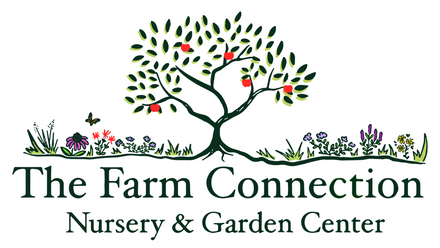Locust, Black, Bare Root
Nitrogen-Fixer with Honeybee & Coppice Value
Locust, Black, Bare Root - Bare Root / 6-18" Seedling is backordered and will ship as soon as it is back in stock.
Couldn't load pickup availability
Delivery and Shipping
Delivery and Shipping
Make sure to thoroughly review our entire "Shipping, Returns, Refunds, and Our Guarantee" page for all relevant details about ordering from our store.
Making a purchase from our store constitutes an agreement to all the conditions outlined in those policies.
We appreciate your support and look forward to being your favorite plant provider!
Subscribe to our newsletter
Sign up for exclusive offers.
Black Locust (Robinia pseudoacacia)
Black Locust is a fast-growing, nitrogen-fixing native tree with dense, rot-resistant wood, fragrant spring flowers, and high ecological utility. Native to the Appalachian and Ozark regions but now naturalized widely across North America, Black Locust is valued in regenerative agriculture for its ability to improve degraded soils, provide nectar for pollinators, and serve as a renewable source of firewood, posts, and fodder. While it spreads aggressively in disturbed soils, careful management makes it a powerful ally in silvopasture, erosion control, and agroforestry systems.
Key Characteristics
-
Nitrogen-fixing tree that improves soil health
As a leguminous species, Black Locust forms symbiotic relationships with soil bacteria that fix atmospheric nitrogen. This enriches poor soils and benefits neighboring trees and plants in food forests, reforestation sites, and degraded land restoration. -
Fragrant flowers for bees and pollinators
In late spring, Black Locust bursts into bloom with cascades of creamy-white, pea-like flowers that are highly attractive to honeybees and native bees. It is considered a premier honey tree, producing a prized, light-colored honey. -
Durable, rot-resistant wood for fence posts and fuel
Black Locust yields incredibly strong, decay-resistant wood that can last decades in the ground. It’s widely used for fence posts, tool handles, and firewood. Its quick regrowth after coppicing makes it excellent for renewable woodlot systems. -
Valuable in silvopasture and erosion control plantings
With its deep roots and soil-binding capacity, Black Locust stabilizes slopes and reduces erosion. Its open canopy allows sunlight through, making it a good overstory or nurse tree in silvopasture systems or early successional plantings. -
Aggressive spreader—best used with management
Black Locust suckers readily and spreads via root sprouts, especially in disturbed soils. It should be used with intention and contained in designed systems like coppice plots, hedgerows, or silvopasture edges where its benefits can be harnessed.
Product Details
- Native range: Appalachian and Ozark Mountains; now naturalized across North America
- Plant life cycle: Deciduous Tree
- Sun requirements: Full sun
- Soil requirements: Medium-dry to medium; thrives in poor, compacted, or disturbed soils
- Mature height: 40–80 feet
- Bloom time: Late spring
- Bloom color: Creamy white, fragrant
- USDA Hardiness zones: 4–8
Used wisely, Black Locust is a multipurpose tree with immense regenerative value—from feeding pollinators to fixing nitrogen, building soil, producing renewable wood, and controlling erosion. Best planted where its spread can be managed or used to your advantage.
-
Sun RequirementsFull Sun
-
Soil RequirementsMedium, Medium-Dry
-
Bloom ColorWhite
-
Bloom TimeMay, June
-
USDA Hardiness ZonesZone 4, Zone 5, Zone 6, Zone 7, Zone 8
-
Native StatesPennsylvania, Ohio, Indiana, Illinois, Kentucky, Tennessee, Virginia, West Virginia, North Carolina, South Carolina, Georgia, Alabama, Arkansas, Missouri
Payment & Security
Payment methods
Your payment information is processed securely. We do not store credit card details nor have access to your credit card information.




